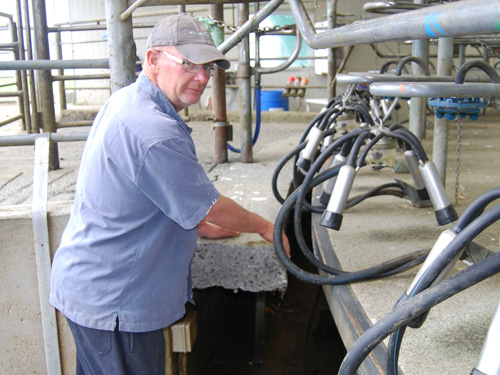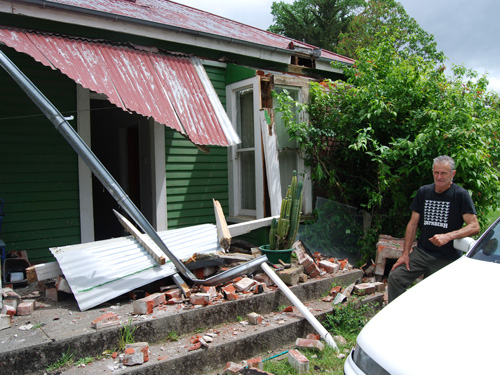Post-quake study reveals hort potential
Large areas of North Canterbury and South Marlborough – affected by the 2016 Kaikoura Earthquakes – offer wide potential for horticulture.
Dairy farmers in the Emu Plain area near the epicentre of today's large earthquake are helping each other out, with many of them unable to milk because of shattered milking platforms.
Mark Williamson, who manages 950 cows on 330ha, has no power or water, the water heating tanks in his shed have toppled, and the 60-bale rotary platform has jumped off its bearings to sit about 15cm out of place.
“Even if there was power you couldn’t move it,” he says.
Williamson said he was lucky he was able to walk his herd for milking at 3 or 4am about 9km to a neighbour’s shed which was still operable on generator power.
 However, without power he couldn’t feed and water them. Although it was “politically incorrect,” he had had no choice but to put them by a creek.
However, without power he couldn’t feed and water them. Although it was “politically incorrect,” he had had no choice but to put them by a creek.
Further along River Road, a small circle of camp chairs stood on a gravel and concrete forecourt of the milking shed of Don and Donalda Galletly’s farm – where the Galletlys, their manager and family, and other farm workers had sat out the aftershocks together in the early hours of this morning.
There was safety and security in numbers, said Donalda Galletly.
“We’ve been looking after the people. That’s the main thing,” she said.
Their shed was also unusable, the rotary platform having jumped off its mountings. The concrete pad was crossed with wide cracks and a nearby feed silo had moved about 15cm.
With milking impossible on the property, manager Mark Galbraith had arranged to move half the herd to a nearby farm, but the other half would stay and would have to be dried off, he said.

Also close to the epicentre was farm forestry worker Chris Costigan, who said he was asleep upstairs in his rented 1894-vintage cottage when the quake hit and was convinced the roof was about to fall on him.
He had no power, no water after his concrete tank toppled from its stand and shattered across the back yard, and was working single-handed this afternoon to try to weatherproof the gaping hole in his living room left by a falling brick chimney.
Costigan said he had been living only 2km from the epicentre of the first of the Canterbury quakes in September 2010, and had been in Cathedral Square, Christchurch, only half an hour before the big fatal quake of February 2011.
“That why I left down there, to get away from them,” he said.
Legal controls on the movement of fruits and vegetables are now in place in Auckland’s Mt Roskill suburb, says Biosecurity New Zealand Commissioner North Mike Inglis.
Arable growers worried that some weeds in their crops may have developed herbicide resistance can now get the suspected plants tested for free.
Fruit growers and exporters are worried following the discovery of a male Queensland fruit fly in Auckland this week.
Dairy prices have jumped in the overnight Global Dairy Trade (GDT) auction, breaking a five-month negative streak.
Alliance Group chief executive Willie Wiese is leaving the company after three years in the role.
A booklet produced in 2025 by the Rotoiti 15 trust, Department of Conservation and Scion – now part of the Bioeconomy Science Institute – aims to help people identify insect pests and diseases.